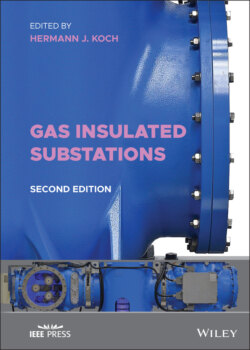Читать книгу Gas Insulated Substations - Группа авторов - Страница 71
1.4 Ratings 1.4.1 General
ОглавлениеThe purpose of ratings is to correctly specify GIS equipment based on electric system topology and characteristics while reducing the variety of technical possibilities and guiding manufacturers. These ratings provide standardized solutions recognized across the industry and reduce cost. The main rating parameters are voltage, insulation level, frequency, current, short time and peak withstand current, duration of short circuit and auxiliary voltages, and frequencies.
In high‐voltage switchgear, the rating structures are defined for devices such as circuit breakers, and disconnect switches, grounding (earthing) switches, and connecting conductors/bus. In general, they are covered in IEEE C37.100.1 or in IEC 62271‐1 for switchgear products.
For assemblies of high‐voltage switchgear like GIS, the standards are used to satisfy design criteria and applications in the field. The design of the GIS must consider the very high cost for developments and manufacturing of different types of pressurized metal enclosures. For this reason, some designs of GIS are grouped to cover multiple voltage ratings. One technical criterion of the equipment, for example, rated voltages of 110, 123, 138, and 145 kV, is covered by the same class of GIS with the same enclosure. Once you reach higher voltages of 230, 345, 500 kV and up, you have GIS in separate enclosures.
Within this range of voltage classification, only different gas densities of SF6 differentiate between the different voltage levels. In terms of current ratings, the difference between 2000, 2500, and 3000 A might only be a different number of contact fingers or different wall thicknesses of conductors.
